MARK GARLICK
Mark Garlick, an astronomer who carried out research on binary stars, has written and illustrated books on the solar system and beyond. But he sometimes takes ideas from here on Earth.

Here, Garlick imagines the view from the surface of a rocky world orbiting a blue giant star
Mars, he says, has landscapes reminiscent of the Grand Canyon, Yellowstone, Hawaii, and Iceland, and has been on field trips to the crater in Arizona to give him an insight into the look of other planets.
As a result, he says: "It's not that difficult to imagine what it would be like standing on the surface of another world."

Photos: Space colonies of the future?
Lush green landscapes – Despite the futuristic technology required to put such a massive structure in space, all of the artwork from Guidice and Davis -- including this image by Davis -- shows lush green landscapes -- a far cry from the reality of the International Space Station today.
Hide Caption
7 of 12
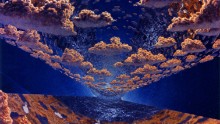
Photos: Space colonies of the future?
Solar eclipse from space – Don Davis' illustration of a Cylindrical Colony imagines what a solar eclipse would look like from space. Davis' work can also be seen on the Discovery Channel and the Science Channel.
Hide Caption
8 of 12
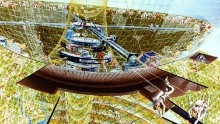
Photos: Space colonies of the future?
Construction crew at work on a colony – Here, Davis depicts a construction crew piecing together a Bernal Sphere -- complete with houses, grass and rivers, seemingly unscathed by the vacuum of space.
Hide Caption
9 of 12

Photos: Space colonies of the future?
Bernal sphere – In this image, Rick Guidice imagines a Bernal Sphere with tilted arrays to maximize exposure to the sun. Guidice illustrated for NASA for 15 years, before becoming a building designer. Guidice has designed homes for many of Silicon Valley's leaders.
Hide Caption
10 of 12
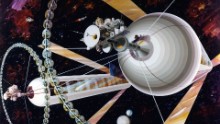
Photos: Space colonies of the future?
The orbiting colony – The Cylindrical Colony was never envisaged as a solitary structure, instead orbiting with a partner -- as demonstrated by Guidice's painting.
Hide Caption
11 of 12

Photos: Space colonies of the future?
Reflecting sunlight – Davis also depicted the exterior view of a Toroidal colony, featuring a giant tilted mirror providing sunlight to the interior surface of the ring.
Hide Caption
12 of 12

Photos: Space colonies of the future?
NASA's imagined space colonies – In 1975 a research group led by Princeton professor Gerard O'Neill conducted a 10 week study of future space colonies. Acclaimed space artists Rick Guidice and Don Davis were commissioned to illustrate the fantastical and as yet unrealized concepts.
Hide Caption
1 of 12

Photos: Space colonies of the future?
Envisaging the future – O'Neill's team settled on three potential designs for the future space stations: the Bernal Sphere, the Toroidal Colony (here imagined by Davis) and the Cylindrical Colony. Potential capacity ranged from 10,000 people to one million, and featured circular designs which rotated to generate artificial gravity.
Hide Caption
2 of 12

Photos: Space colonies of the future?
From page to screen – The Cylindrical Colony -- imagined here by Guidice -- is the most spacious of O'Neill's concepts. The design, later dubbed the 'O'Neill Cylinder', was riffed on in Christopher Nolan's intergalactic blockbuster "Interstellar" forty years later.
Hide Caption
3 of 12

Photos: Space colonies of the future?
Crystal palace – The Bernal Sphere was first proposed by John Desmond Bernal as far back as 1929, with O'Neill's team adapting the half-century old idea. Here, Guidice imagines a colorful, highly-curved living surface that featured a "crystal palace" for agriculture and light reflected in via windows near the poles.
Hide Caption
4 of 12
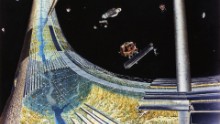
Photos: Space colonies of the future?
1990: A Space Odyssey? – In a paper presented to NASA, O'Neill uses 1990 as a hypothetical start date for a space colony, with the team drawing up a number of potential costs for construction and transportation -- even the volume of livestock each station would need to ship in. Here, Davis depicts how this could work.
Hide Caption
5 of 12
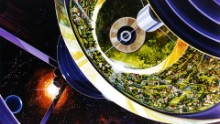
Photos: Space colonies of the future?
Cutaway of the Bernal Sphere – Rick Guidice's painting of a cutaway of the Bernal Sphere also shows some of the huge solar arrays required to power the station and its rotation.
Hide Caption
6 of 12

Photos: Space colonies of the future?
Lush green landscapes – Despite the futuristic technology required to put such a massive structure in space, all of the artwork from Guidice and Davis -- including this image by Davis -- shows lush green landscapes -- a far cry from the reality of the International Space Station today.
Hide Caption
7 of 12

Photos: Space colonies of the future?
Solar eclipse from space – Don Davis' illustration of a Cylindrical Colony imagines what a solar eclipse would look like from space. Davis' work can also be seen on the Discovery Channel and the Science Channel.
Hide Caption
8 of 12

Photos: Space colonies of the future?
Construction crew at work on a colony – Here, Davis depicts a construction crew piecing together a Bernal Sphere -- complete with houses, grass and rivers, seemingly unscathed by the vacuum of space.
Hide Caption
9 of 12

Photos: Space colonies of the future?
Bernal sphere – In this image, Rick Guidice imagines a Bernal Sphere with tilted arrays to maximize exposure to the sun. Guidice illustrated for NASA for 15 years, before becoming a building designer. Guidice has designed homes for many of Silicon Valley's leaders.
Hide Caption
10 of 12

Photos: Space colonies of the future?
The orbiting colony – The Cylindrical Colony was never envisaged as a solitary structure, instead orbiting with a partner -- as demonstrated by Guidice's painting.
Hide Caption
11 of 12

Photos: Space colonies of the future?
Reflecting sunlight – Davis also depicted the exterior view of a Toroidal colony, featuring a giant tilted mirror providing sunlight to the interior surface of the ring.
Hide Caption
12 of 12

Photos: Space colonies of the future?
NASA's imagined space colonies – In 1975 a research group led by Princeton professor Gerard O'Neill conducted a 10 week study of future space colonies. Acclaimed space artists Rick Guidice and Don Davis were commissioned to illustrate the fantastical and as yet unrealized concepts.
Hide Caption
1 of 12

Photos: Space colonies of the future?
Envisaging the future – O'Neill's team settled on three potential designs for the future space stations: the Bernal Sphere, the Toroidal Colony (here imagined by Davis) and the Cylindrical Colony. Potential capacity ranged from 10,000 people to one million, and featured circular designs which rotated to generate artificial gravity.
Hide Caption
2 of 12

Photos: Space colonies of the future?
From page to screen – The Cylindrical Colony -- imagined here by Guidice -- is the most spacious of O'Neill's concepts. The design, later dubbed the 'O'Neill Cylinder', was riffed on in Christopher Nolan's intergalactic blockbuster "Interstellar" forty years later.
Hide Caption
3 of 12

Photos: Space colonies of the future?
Crystal palace – The Bernal Sphere was first proposed by John Desmond Bernal as far back as 1929, with O'Neill's team adapting the half-century old idea. Here, Guidice imagines a colorful, highly-curved living surface that featured a "crystal palace" for agriculture and light reflected in via windows near the poles.
Hide Caption
4 of 12

Photos: Space colonies of the future?
1990: A Space Odyssey? – In a paper presented to NASA, O'Neill uses 1990 as a hypothetical start date for a space colony, with the team drawing up a number of potential costs for construction and transportation -- even the volume of livestock each station would need to ship in. Here, Davis depicts how this could work.
Hide Caption
5 of 12

Photos: Space colonies of the future?
Cutaway of the Bernal Sphere – Rick Guidice's painting of a cutaway of the Bernal Sphere also shows some of the huge solar arrays required to power the station and its rotation.
Hide Caption
6 of 12

Photos: Space colonies of the future?
Lush green landscapes – Despite the futuristic technology required to put such a massive structure in space, all of the artwork from Guidice and Davis -- including this image by Davis -- shows lush green landscapes -- a far cry from the reality of the International Space Station today.
Hide Caption
7 of 12
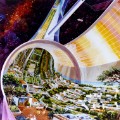
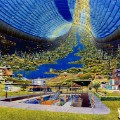
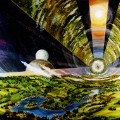
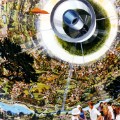
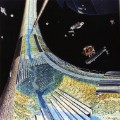



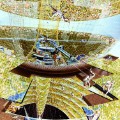
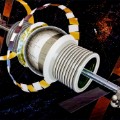

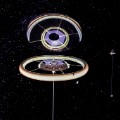
Garlick was first inspired to draw as a child.
"When I was a kid I was really good at art. I particularly liked dinosaurs. I used to draw them all the time," he said.
He moved from acrylic paints to making digital images in the late 1990s, enjoying the photo-realistic pictures he could create on the computer.
The Juno mission is just starting to return images from Jupiter -- and it's a scene that Garlick illustrated in advance of its encounter.
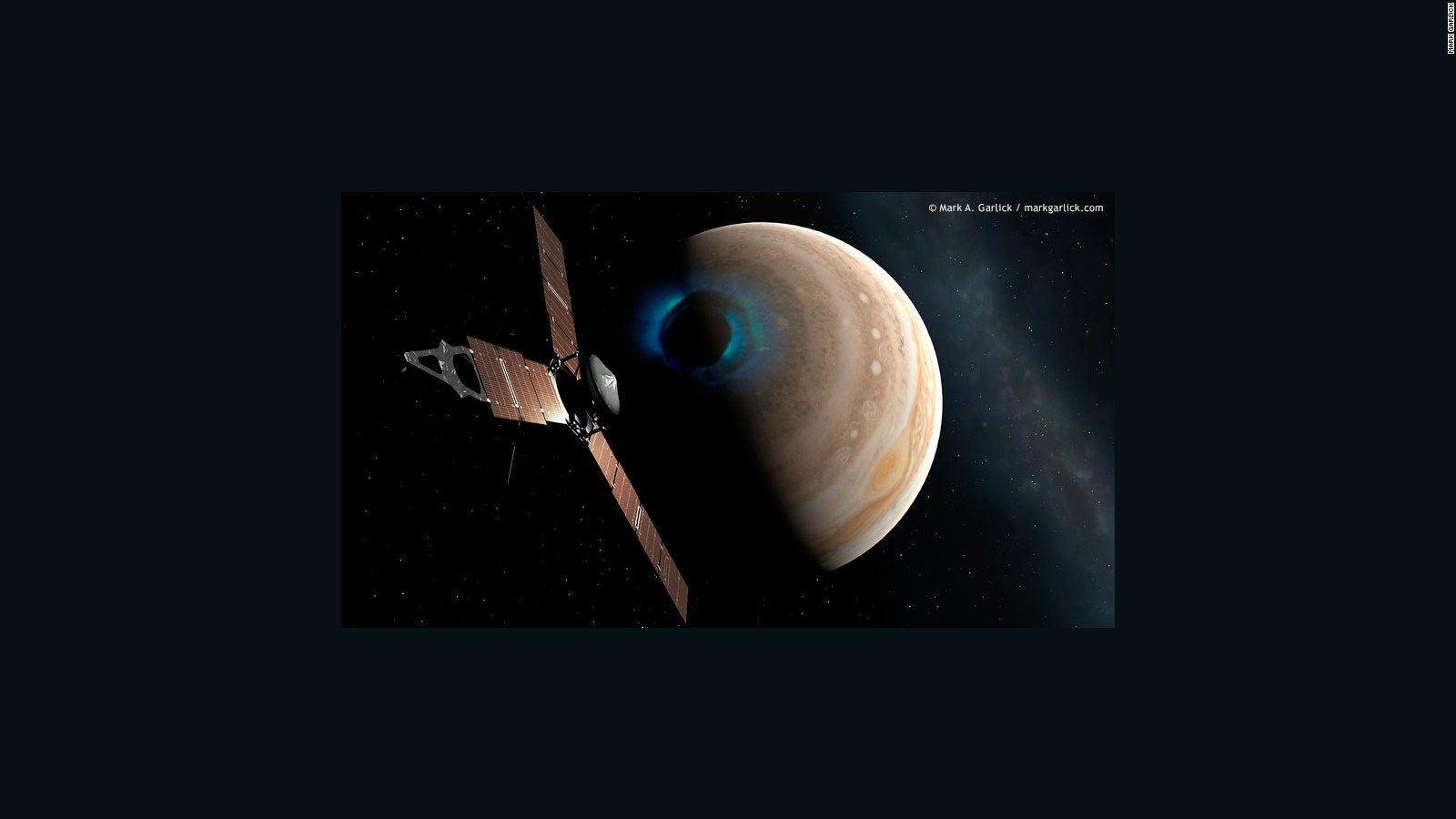
Resource: http://edition.cnn.com/2016/10/05/arts/space-artists-alien-landscapes/index.html